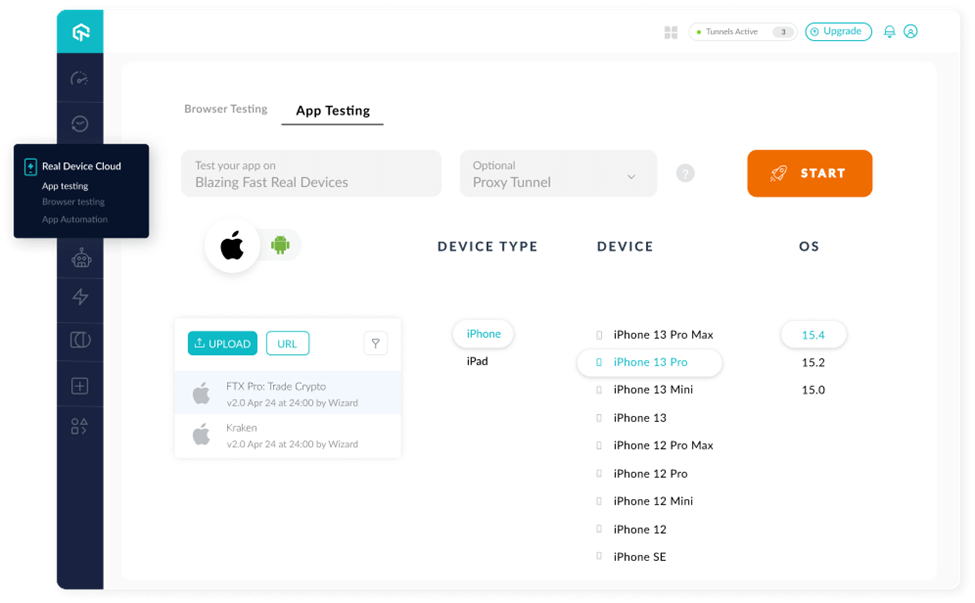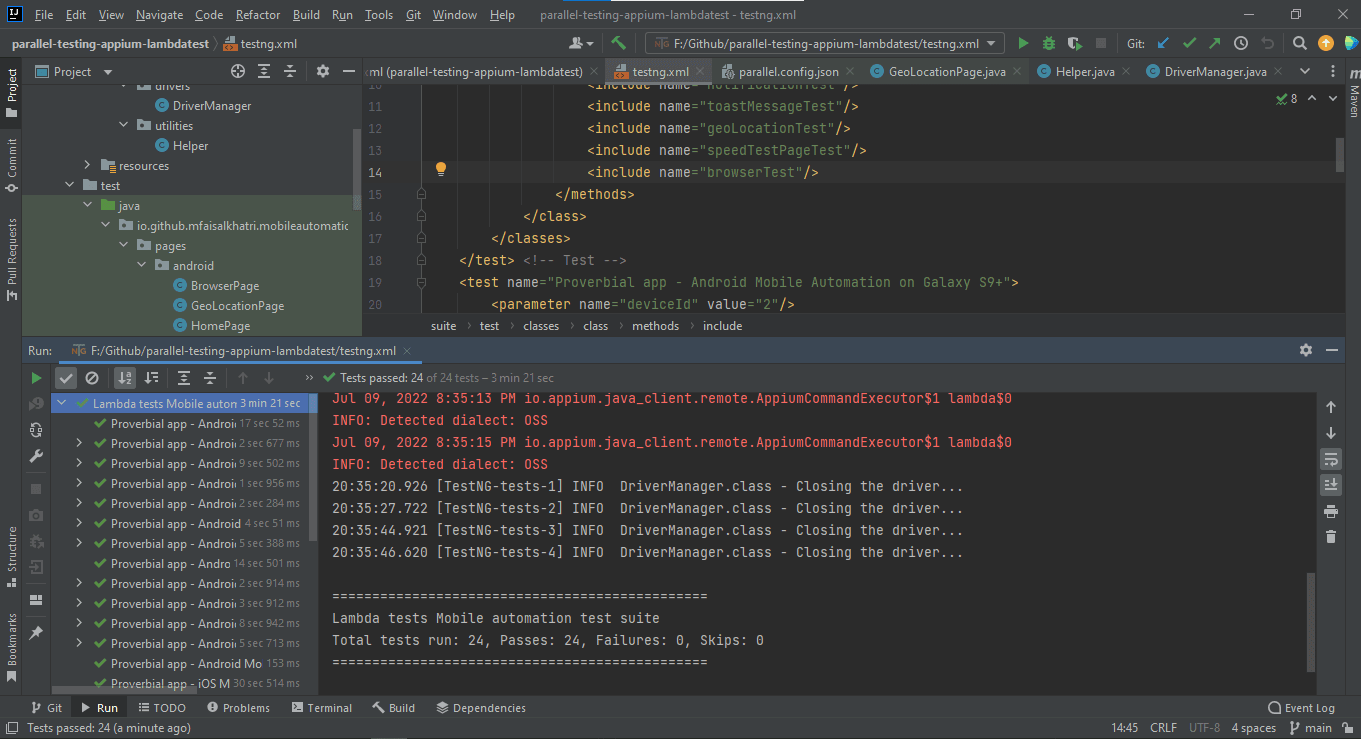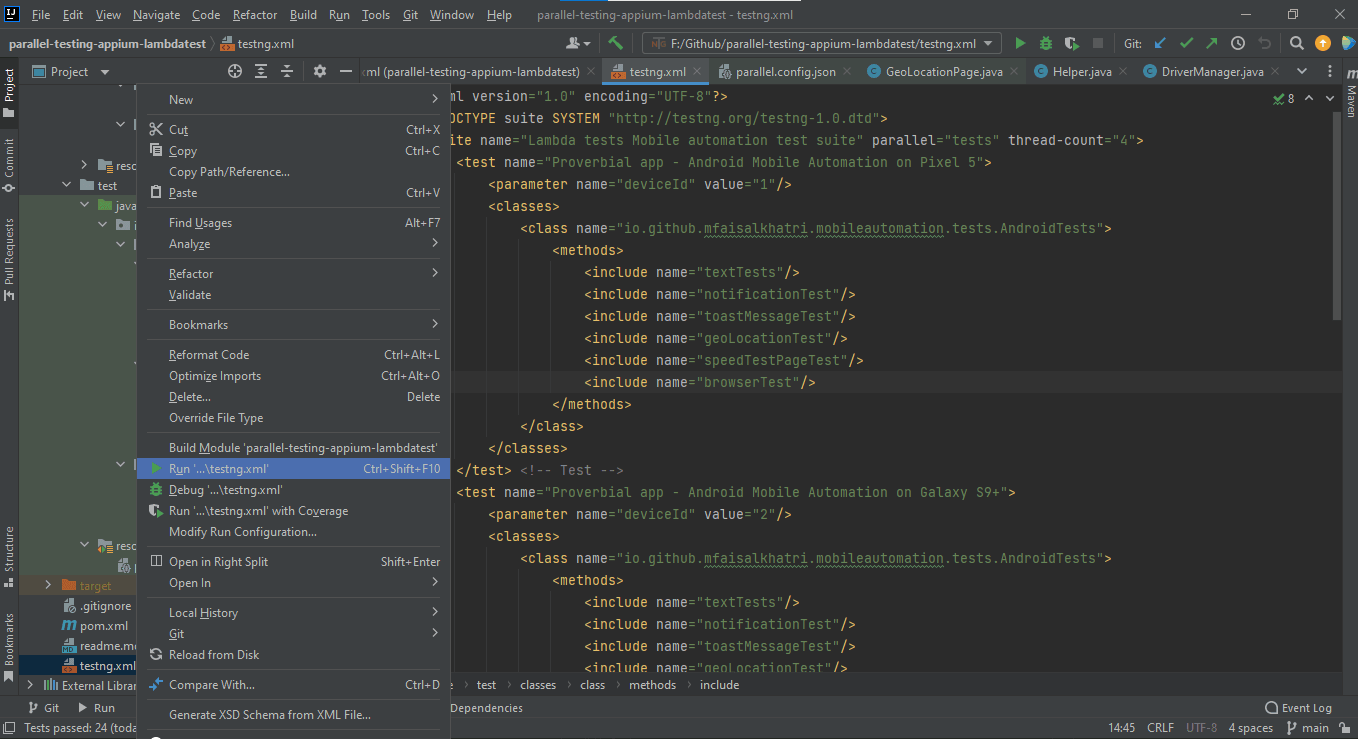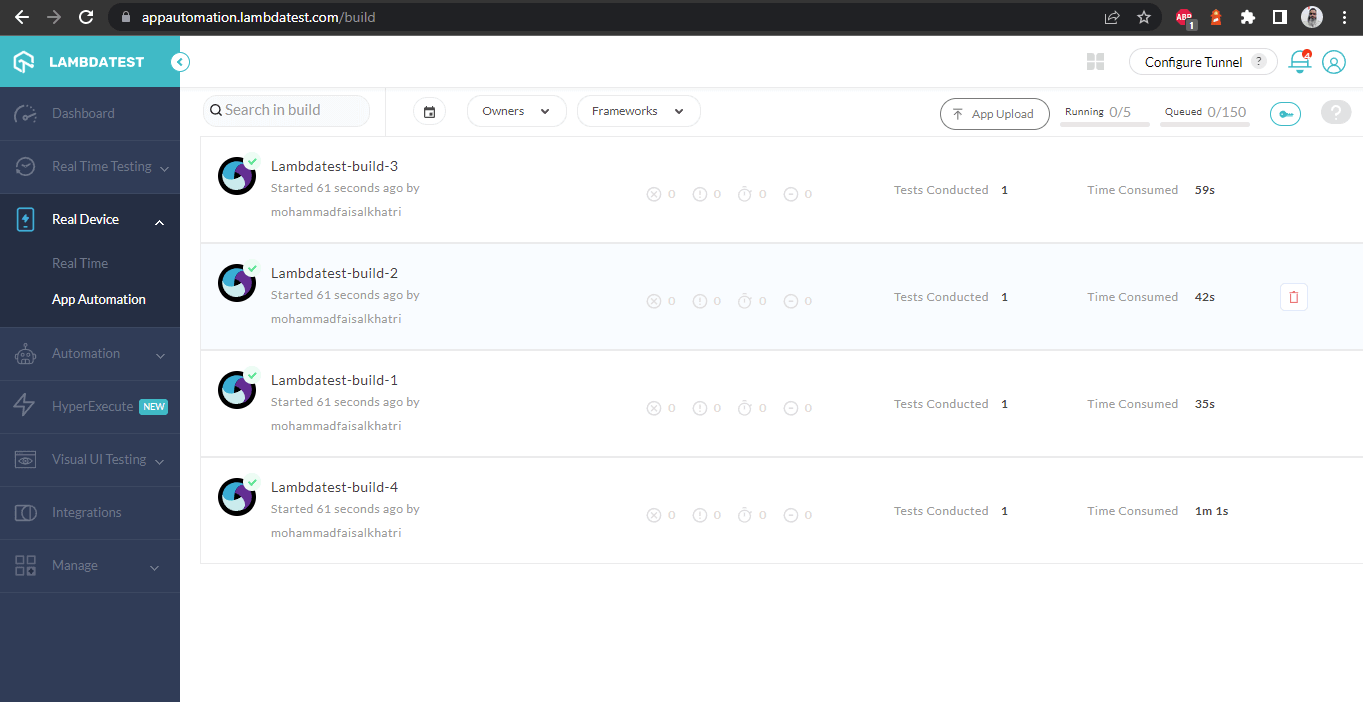In the modern application development industry, apps have been highly advanced in terms of complexity and functionality. A modern application can now cater to multiple needs at the same time. It accomplishes this goal by accumulating and interacting with multiple elements at the same time. So, it becomes very important for the application developers to verify the proper functioning of not only the individual elements but also the combined infrastructure. In this process, the application developers can use various advanced tools and testing processes like parallel test execution, Appium automation, and LambdaTest to highly improve the quality of the application development process. The integration of Agile Methodologies like continuous integration and continuous development can also boost this process.
So, with this article, we will guide the new automation testers and developers through the setup and execution of parallel test execution with Appium and LambdaTest. We’ll also discuss some of the best practices, tools, and platforms that can help utilize the full potential of the automation testing environment.
The Market for Parallel Testing and its Integration with Test Automation
As we already mentioned earlier, modern applications consist of thousands of different elements. Following contemporary testing practices, it would be almost impossible to verify the performance of all these elements with manual testing. In test automation, the system will replace human involvement with a test file that will supply all the required parameters, statistics, and data sets. With the help of this file, the system can emulate human interactions and communicate with the application undergoing the development process.
It is also possible to make significant changes in the test file for customizing the test cases according to the requirements of the development project. Automation testing also allows easy maintenance and storage of existing test data for reusing them in future app development projects.
Other than automation testing, app developers can also integrate parallel testing to further improve the efficiency of the test cases. With parallel testing, it is possible to initiate multiple instances of the testing process on different configurations and machines at the same time. To achieve this goal, parallel testing uses the principle of a hub that is connected to several nodes.
Introducing Appium
Appium is an open-source automation testing tool that helps app developers to verify the proper performance of all the user interface elements present in an application. It also allows the execution of test cases on multiple popular mobile platforms like iOS, Android, and Windows. The mobile platform is one of the fastest-growing industries as various surveys show that 55% of the total Internet traffic comes from mobile devices. This is because, with the help of mobile devices like smartphones, tablets, and smartwatches, end users can achieve desktop-like performance on devices that can fit in their pockets. The open-source infrastructure of Appium also makes it usable without any expenses.
For the execution of the test cases, Appium uses the JSON wire protocol, which is an extension of the Selenium JSON wire protocol. It allows natively control mobile web and hybrid applications. Appium is also suitable for the execution of automation testing on native applications.
Introducing LambdaTest
The setup and configuration process for real device testing is not only very expensive but also very hectic. However, with the help of cloud-based solutions like LambdaTest, app developers can achieve similar test reports while executing the test cases on remote servers. These servers provide access to real devices through the internet.
While using LambdaTest for Appium testing, the application developers can access the LambdaTest real device cloud for executing the test cases. The Real device cloud provides access to more than 3000+ different test environments and real Android and iOS devices. LambdaTest’s integration of parallel testing allows the developers to initiate multiple Appium test cases at the same time.
Moreover, the LambdaTest cloud is a highly secure and reliable environment for executing all the critical test cases for an application. Finally, while performing the test analytics for Appium test cases, the app developers can go through the visual representation of the test results with the help of multiple screenshots and videos. LambdaTest also maintains a real-time activity log about the failed and successful Appium test cases.
The LambdaTest real device cloud also keeps track of past test cases so that the developers can use them for the referencing process. Finally, the integration of test reports from real devices and thousands of emulation softwares massively boosts the accuracy of the reports.
Executing Parallel Testing with Appium and LambdaTest
The process of parallel test execution with Appium and LambdaTest is quite simple if executed properly. So, for the ease of the new automation testers and developers, we have divided the entire process into several steps:
- The first step is to set up the LambdaTest account with the help of the required credentials and access key that can be availed through the LambdaTest dashboard. In case the app developers do not have a LambdaTest account, they can navigate to the official website of LambdaTest to create a new account.
- After this, the application developers have to set up and configure the Appium project. They must ensure to add all the required capabilities like their target browser, operating system, and device.
- It is also important to ensure that the application developers have written all the test scripts using a programming language supported by LambdaTest and the Appium client libraries. Some of the popular alternatives include JavaScript, Python, and Java. While performing Appium testing with LambdaTest, the app developers also have to integrate the relevant browser drivers with the LambdaTest API.

LambdaTest
- After this process, the application developers have to install all the required LambdaTest integrations for Appium. This process is easily completed by using appropriate client libraries. The app developers can also perform this step by adding the necessary dependencies to the Appium project.
- When the application developers are working with existing test scripts, they must modify them to use LambdaTest capabilities. In this step, it is also very important to specify the required device and browser configurations. With the help of this process, the application developers can utilize the LambdaTest cloud infrastructure for the execution of parallel test cases.
- For executing the test cases in a parallel configuration, the application developers must divide the test cases into suitable subsets or individual test suits. The app developers also have to initiate a test runner like pytest, JUnit, or TestNG. It will help them to distribute and execute the test cases across multiple processes or threads. The Developers have to use the following code to set up TestNG:
<!DOCTYPE suite SYSTEM “https://testng.org/testng-1.0.dtd” >
<suite name=”ParallelTestSuite” parallel=”tests”>
<test name=”TestOnDevice1″>
<parameter name=”deviceName” value=”Google Pixel 3″ />
<parameter name=”platformVersion” value=”10.0″ />
<parameter name=”app” value=”path/to/your_app.apk” />
<parameter name=”username” value=”your_lambdatest_username” />
<parameter name=”accessKey” value=”your_lambdatest_access_key” />
<classes>
<class name=”com.example.TestClass” />
</classes>
</test>
<test name=”TestOnDevice2″>
<parameter name=”deviceName” value=”Samsung Galaxy S10″ />
<parameter name=”platformVersion” value=”11.0″ />
<parameter name=”app” value=”path/to/your_app.apk” />
<parameter name=”username” value=”your_lambdatest_username” />
<parameter name=”accessKey” value=”your_lambdatest_access_key” />
<classes>
<class name=”com.example.TestClass” />
</classes>
</test>
<!– Add more test cases for other devices if needed –>
</suite>
- It is also essential for app developers to specify the number of parallel processes or threads depending on the requirements of the app project. It is also essential that these threads remain within the LambdaTest subscription limits. These threads will represent the number of test cases that can be initiated simultaneously on the API.
The final step in the execution process is to run the test cases using the configured parallel execution setup. The system will automatically distribute the test cases and execute them on multiple browsers and devices in the LambdaTest cloud database.


- After the execution process, the system will automatically display the final Test report showing all the bugs and errors that might be present in the code framework of the application. The app developers have to go through this report and pinpoint all the mistakes that have to be removed in the debugging process that will follow soon after.

- Based on the condition of the application, the app developers might need to initiate the test cases multiple times until it is completely devoid of all errors and is ready to be forwarded to the production phase. A useful tip would be to name the test cases according to the target elements as it helps massively to keep track of the test cases on a complex app infrastructure.

The app developers might remember that all the steps that are discussed above can change depending on the exact programming language, testing framework, or the specific requirements of the application undergoing the development project. So, it is very important to devise a test plan before the testing process. This plan will prepare the app developers and testers for any unwanted surprises that might arise in the application testing process. We also recommend the app developers include both the production and business teams during the test planning process. This step will allow us to create a basic awareness of the current status of the application.
The app developers should also go through the official documentation and examples provided by both LambdaTest and Appium. It will help them to get more detailed and up-to-date information about all the features, plugins, and dependencies that might be useful for their app project. The proper execution of parallel testing with LambdaTest and Appium can massively boost the feedback cycle, test coverage, and application quality across different configurations and requirements. It will also play a significant role in creating a positive image for the company in this competitive segment of the industry.
The Conclusion
With this article, we aimed to guide the app developers through the process of executing parallel testing on Appium and LambdaTest. This becomes a very important criterion as the app market continues to become more and more reliable in automation testing practices. To cope up with this transition, it is also important for the app developers to continue updating their knowledge regarding all the new trends, innovations, and additions in the segment of automation testing. The app companies can also help to spread the required knowledge through multiple seminars and campaigns. Lastly, it is very important to gather relevant knowledge regarding the requirements of the target audience. This information will help the app developers to customize the application database accordingly. With this information, app developers can also eliminate compatibility issues in their apps.